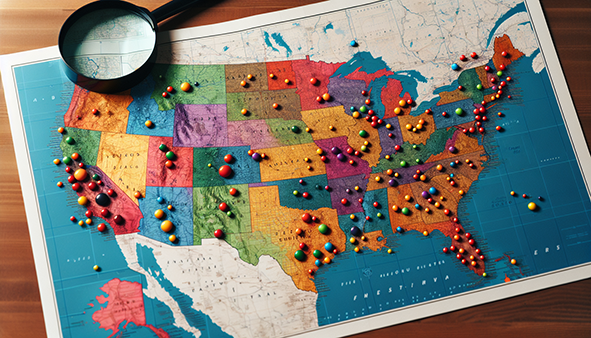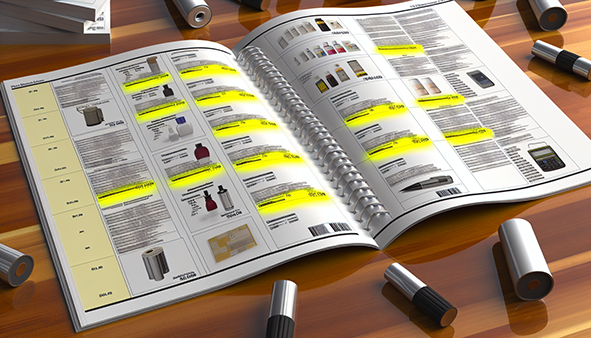Mastering Shopify Sales Tax Compliance: A Complete Guide for Merchants
As a merchant on Shopify, one navigates through the enchanting world of e-commerce. However, lurking beneath the surface of this digital marketplace is a complex maze of Shopify sales tax compliance. It’s like a multifaceted puzzle, where every piece represents a different tax rate, jurisdiction, or rule. Fear not! This guide aims to be your compass, enlightening you about sales tax, your responsibilities, and how Shopify can be your trusted ally in this journey.
Understand and comply with sales tax regulations to ensure accurate collection and remittance.
Sales tax rates vary across states, counties, cities and time frames. Shopify simplifies the process by automatically applying taxes.
Track collected data accurately for reporting & filing returns using Shopify’s reports or third party apps/services.

Much like a ship captain needs to comprehend the weather and sea conditions, you as a Shopify merchant, need to grasp the concept of collecting sales tax for a seamless e-commerce journey. Sales tax, a consumption tax imposed on goods and services, is collected by you, the seller, and remitted to the government. It’s like a relay race where you’re the crucial link passing the baton (the tax) from the customer to the government. But this isn’t a straightforward race; it’s a labyrinthine track with various twists and turns, including the responsibility of remitting sales tax and understanding sales taxes in different jurisdictions.
Certainly, to find your way through this maze, you need to:
Identify the goods and services liable to sales tax
Ascertain if your business has a physical or economic nexus in the states you operate. Think of it as your business’s footprint in a state. The larger the footprint, the more responsibilities you have.
Ensure accurate sales tax calculations to collect and remit the correct amount of tax. This is like the compass that guides you.
In case of doubts, consult a tax professional or your local tax authority to guarantee you’re proceeding correctly. After all, in this complex maze of sales tax compliance, a guide can be a lifesaver.
Defining Sales Tax
Imagine you’re a chef cooking a complex recipe. The first step is always to understand the ingredients. In our case, the recipe is sales tax compliance, and the primary ingredient is an understanding of sales tax. It’s calculated by multiplying the retail price of the good or service by the applicable sales tax rate, which is typically set by the state and local government. It’s akin to adding spices to a dish; each state adds its own flavor by determining the sales tax rate, which can range from 4% to 8% of the taxable amount.
However, all the items in your store are not taxed the same way. Some items, like tangible personal property and retail services, are typically taxable. However, just as a chef adjusts the spices according to the dish, the products and services subject to sales tax can vary by state.
After collecting the tax from the customer, as a seller, it’s your responsibility to remit it to the government. But remember, not all items are taxable. Certain goods and services, like medical care, education, and personal and professional services, are often exempt from sales tax. Just as you wouldn’t add salt to a sweet dish, you wouldn’t charge tax on these exempt items. It’s essential to know when to collect tax and when not to.
State and Local Variations
Imagine you’re a traveler journeying through the United States. Each state you visit has its own unique culture, customs, and yes, sales tax rates and regulations. Just as you would adapt to the customs of each place, as a merchant, you must comprehend and adhere to the particular tax regulations in each jurisdiction where you have a tax liability. It’s like a quilt, each state and local jurisdiction adding its own unique patchwork of tax rates and regulations to the overall complexity of US sales tax.
The tax sourcing rules act as your travel guide, helping determine which state has the authority to impose taxes on a transaction, depending on the origin or destination of the shipment within that state. It’s like the compass guiding you to which state you owe tax.
So, as you journey through the world of e-commerce, remember, the sales tax landscape varies from state to state, just like the landscapes of the United States, from the beaches of California to the mountains of Colorado.

As you set sail on your sales tax compliance journey, you’ll discover that Shopify is not just a tool, it’s also your guide. Shopify simplifies the tax collection process by automatically applying sales tax to transactions, including shipping charges, and categorizing products to apply product-specific rates. It’s like having an expert co-pilot handling the controls, automatically adjusting the course as needed.
Shopify not only handles the tax rates but also accommodates exceptions. With Shopify’s tax overrides, you can manually adjust the tax rates for specific products or jurisdictions. It’s like having a map with alternative routes for when the usual path doesn’t quite fit the journey. Now, let’s explore these features to understand their role in your journey towards sales tax compliance, including the essential aspect of Shopify tax.
Automatic Tax Rate Calculation
Automatic tax rate calculation in Shopify is like your GPS, guiding you through the tax collection process. Based on the customer’s location and product type, it computes the appropriate taxes ensuring you stay on the right path. So, when a customer proceeds to checkout, Shopify computes the pertinent taxes in accordance with the customer’s shipping address and the tax settings you’ve configured in your Shopify store.
Similar to a GPS adjusting to different speed limits and routes, Shopify’s automatic tax rate calculation accommodates the diverse tax rates and rules unique to each country or region. It considers variations between states, cities, and even counties. So, whether you’re selling to a customer in the bustling city of New York or the tranquil towns of Vermont, Shopify’s automatic tax rate calculation ensures you collect the right amount of tax.
Tax Overrides
Just like a seasoned navigator always keeps a plan B ready, Shopify offers tax overrides that allow you to manually tweak tax rates for certain products or jurisdictions. It’s like having an alternate route for those instances where the automatic calculation may not suffice. For example, if you’re selling clothing in Pennsylvania, where it’s tax-exempt, you can set a tax override to ensure the correct tax rate is applied.
Setting up tax overrides in Shopify is as easy as following a recipe. From your Shopify admin dashboard, simply follow these steps:
Select ‘Settings’ then ‘Taxes’.
Configure the tax rates for your products.
Choose the products for tax overrides.
Click on ‘More options’ and ‘Add to collection’.
Voila! You’ve added the selected products to a tax override collection.
With tax overrides and tax thresholds, you’re not just setting the course, but also adjusting it as needed, ensuring a smooth and accurate tax collection journey.

Having acquired the skills to collect sales tax, your next step is to determine where you need to collect it. This is determined by your sales tax nexus, a term that might seem as cryptic as a treasure map, but in reality, it’s your key to unlocking your tax obligations. Just as a ship’s flag determines the laws it must abide by, your nexus determines your tax liability, including the responsibility to collect taxes. Grasping the concept of a nexus and registering for sales tax permits can be likened to procuring the passport and visa for your journey through tax compliance.
Shopify enables you to identify potential nexus using the sales tax insights available in your Shopify settings. It’s like your personal travel advisor, providing insights about your footprint in different states. But just as countries have different visa requirements, states have different types of nexus: physical and economic. Let’s delve into the specifics.
Physical vs. Economic Nexus
A physical nexus, like the name suggests, is based on having a substantial physical presence in a state. It’s like setting up your stall in a local market. If you have an office, warehouse, or employees in a state, you have a physical nexus there.
On the other hand, an economic nexus is established when you surpass a certain amount of sales or transactions in a state, typically $100,000 in annual sales or 200 separate transactions. It’s like being a popular online seller with customers from all over the world.
Ascertain whether you have a nexus in various states might feel akin to piecing together a puzzle. It requires careful consideration and knowledge of the regulations in each state. If you’re uncertain, it’s always best to seek advice from state tax authorities or a tax professional.
After all, when navigating the seas of sales tax compliance, a reliable guide can make all the difference.
Registering for Sales Tax Permits
Upon identifying your nexus, your subsequent step involves registering for sales tax permits. This is like obtaining your passport, giving you the official authority to collect sales tax from your customers. The procedure is akin to applying for a travel visa. You need to contact the relevant state tax authorities and complete the necessary paperwork or online registration process.
Just as visa requirements differ from country to country, the process for registering for a sales tax permit can vary from state to state. For example, in California, you must register with the California Department of Tax and Fee Administration (CDTFA) and provide necessary details of your business. Meanwhile, in New York, you create a Tax Department Business Online Services account and obtain a Certificate of Authority. So, as you sail through the waters of sales tax compliance, remember to obtain your permits, for they are your license to legally collect and remit sales tax.

Much like every sea has its tranquil regions, sales tax comes with its exemptions. Some products and customers are exempt from sales tax, providing a respite in your compliance journey. It’s like having safe harbors where you can anchor your ship without worrying about tax collection. Let’s navigate these calm waters and understand how Shopify helps manage tax-exempt products and customers.
Customers exempt from tax encompass resellers, government organizations, and nonprofits. It’s like having diplomatic immunity in the world of sales tax. Shopify also facilitates the identification of tax-exempt products. It’s like having a special cargo that is exempt from customs duty. Now, let’s take a closer look at these exemptions.
Product-Based Exemptions
Similar to certain goods being exempt from customs duty, some products might be sales tax-exempt or liable to varying tax rates based on local regulations. For instance, essential food items, certain types of property, and specified products can be tax-exempt. However, similar to rules differing from port to port, the same product can have different tax rates in different states in the US.
To manage these exemptions in Shopify, you can:
Create a manual collection for tax-exempt products
Review the list of products in the ‘Taxes and Duties’ section of your Shopify settings. It’s like having a separate cargo hold for tax-exempt goods.
Apply these exemptions to this collection in the Shopify settings under taxes. This ensures you’re not charging tax where you’re not supposed to, just as you wouldn’t charge customers for an item that’s on the house.
Customer-Based Exemptions
Just like some passengers have a VIP pass, some customers are exempt from sales tax. These include sales to tax-exempt organizations and other scenarios based on the nature of the property being sold, resale exemption certificates, government exemptions, and exemptions for essential items such as food, medicine, and clothing. As a seller, you have a legal responsibility to collect exemption certificates from these customers at the point of sale and preserve those certificates for as long as sales take place.
In Shopify, verifying a customer’s tax-exempt status is as simple as navigating to the ‘Customers’ section in your admin dashboard and assessing for a tax-exempt indication in their profile. It’s like checking a passenger’s boarding pass.
So, as you journey through sales tax compliance, remember to identify your tax-exempt customers and ensure you’re giving them the tax exemptions they’re entitled to.

As you advance in your journey of sales tax compliance, it’s vital to maintain a record of your progress and the tax collected. This is where reporting and filing sales tax returns come into play. It’s like keeping a ship’s log, noting down all the tax you’ve collected and where you’ve collected it from. Shopify’s sales tax reports aid in this process, serving as your logbook, and third-party apps and services, such as Quaderno, can offer further assistance.
Shopify’s sales tax reports aid in tracking and analyzing your tax collection data, thereby simplifying the task of preparing and filing precise sales tax returns. It’s like having a detailed map of your journey, showing you exactly where you’ve collected tax and how much. However, much like a ship’s captain depends on a range of tools and resources, you can also utilize third-party apps and services for extra assistance. Some popular third-party apps and services for sales tax management include:
TaxJar
Avalara
Quaderno
Taxify
These tools can help automate your sales tax calculations, generate reports, and even file your sales tax returns on your behalf. By using these additional resources, you can ensure that your sales tax compliance is accurate and efficient.
Sales Tax Reports in Shopify
Sales tax reports in Shopify function as your compass and map, offering a detailed breakdown of your sales and tax data divided by:
State
County
City
Time frame
It’s like a detailed log of your journey, recording every tax collection you’ve made. To access these reports, you just need to navigate to the ‘Reports’ section in your Shopify admin dashboard.
Interpreting these reports is like reading a map. You review the detailed summary of sales and tax information for orders, taking note of the state, county, and other tax reporting categories. This gives you a comprehensive understanding of the taxes you’ve collected. And just like a ship’s log gets updated regularly, Shopify’s sales tax reports are updated either monthly or quarterly, in accordance with state regulations and your own sales volume.
Third-Party Apps and Services
Just as a ship’s captain depends on the assistance of a reliable first mate, you can utilize third-party apps and services for extra help with sales tax compliance. One such service is Quaderno, a plug-in that provides instantaneous tax reports, which are advantageous for filing US sales tax, VAT, and GST. It’s like having a first mate who not only helps navigate but also keeps track of your journey.
Quaderno integrates with Shopify through integration tools or APIs, enabling access to and synchronization of your store’s sales transactions and customer information. It’s like having an efficient crew member who keeps a watchful eye on every transaction and customer, ensuring you’re always in compliance with sales tax regulations.
As we anchor at the end of our journey through the sea of sales tax compliance, it becomes evident that while the waters may seem turbulent, with the right tools and understanding, navigating them becomes a breeze. From understanding sales tax and your responsibilities to setting up sales tax collection in Shopify, identifying your nexus, managing tax-exempt products and customers, and finally reporting and filing sales tax returns - each step brings you closer to mastering sales tax compliance. And remember, just as a seasoned sailor never ventures out to sea without a compass and map, as a Shopify merchant, you should never embark on your e-commerce journey without a solid understanding of sales tax compliance.
Do you pay sales tax on Shopify?
Yes, you do need to pay sales tax on Shopify. Shopify uses many default sales tax rates that can be overridden if necessary, but you need to make sure they are up-to-date and correct for your situation. Ultimately, the Shopify seller is responsible for remitting sales tax to the states.
Does Shopify report sales tax to IRS?
Yes, Shopify is required to report sales to the IRS. It does not file or remit taxes on your behalf, but it still must report on the majority of transactions made through the platform.
What is the sales tax on Shopify in NY?
The sales tax rate for Shopify purchases in New York ranges from 4-8.875%, and can be updated in the settings. This does not apply to purchases made through marketplaces, as these are automatically charged sales tax.
How do you handle sales tax when selling online?
When selling online, businesses should ensure that they have a sales tax permit if the order is being shipped to an applicable state. Companies must also check if they have a physical presence, or “nexus”, in the state as this may require them to collect sales taxes from online customers in that jurisdiction. Failure to do so could be considered illegal.
What is sales tax and why is it important for Shopify merchants?
Sales tax is an important consumption tax imposed on goods and services, collected by the seller and remitted to the government. It's essential for Shopify merchants since it dictates how much tax they must collect and remit, impacting their business operations.